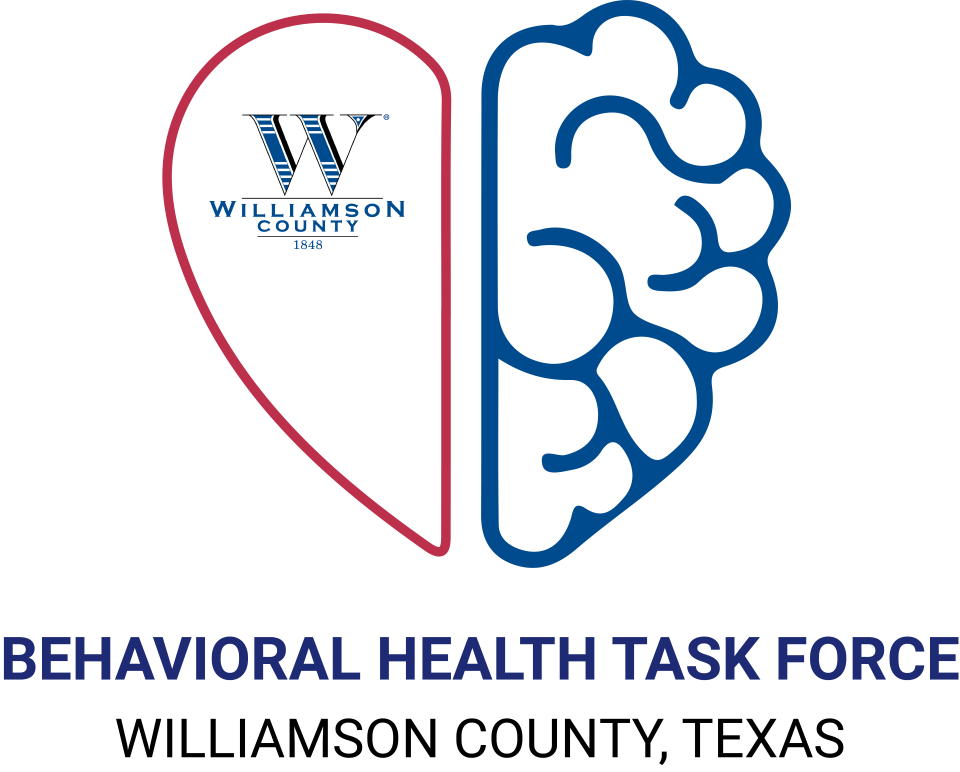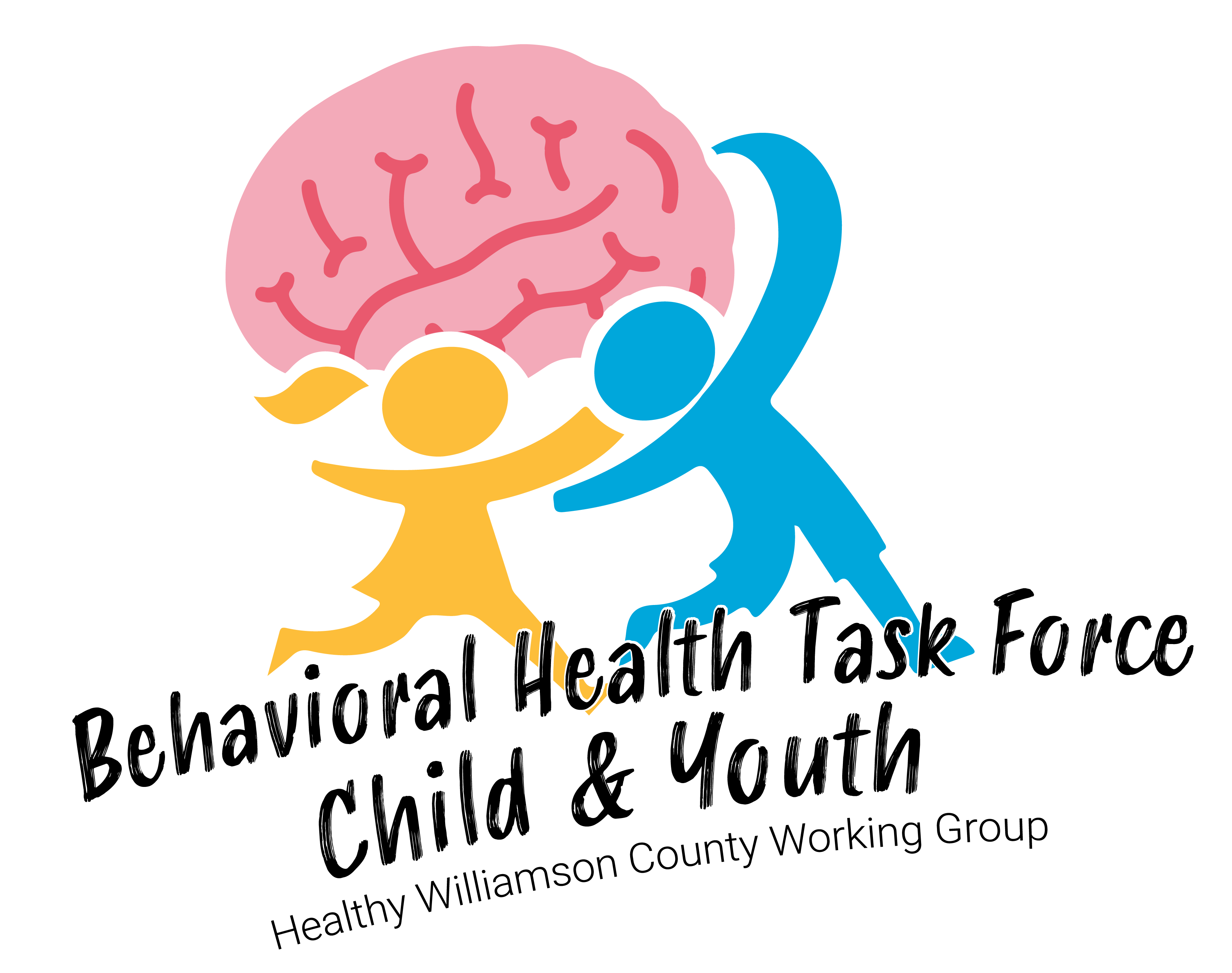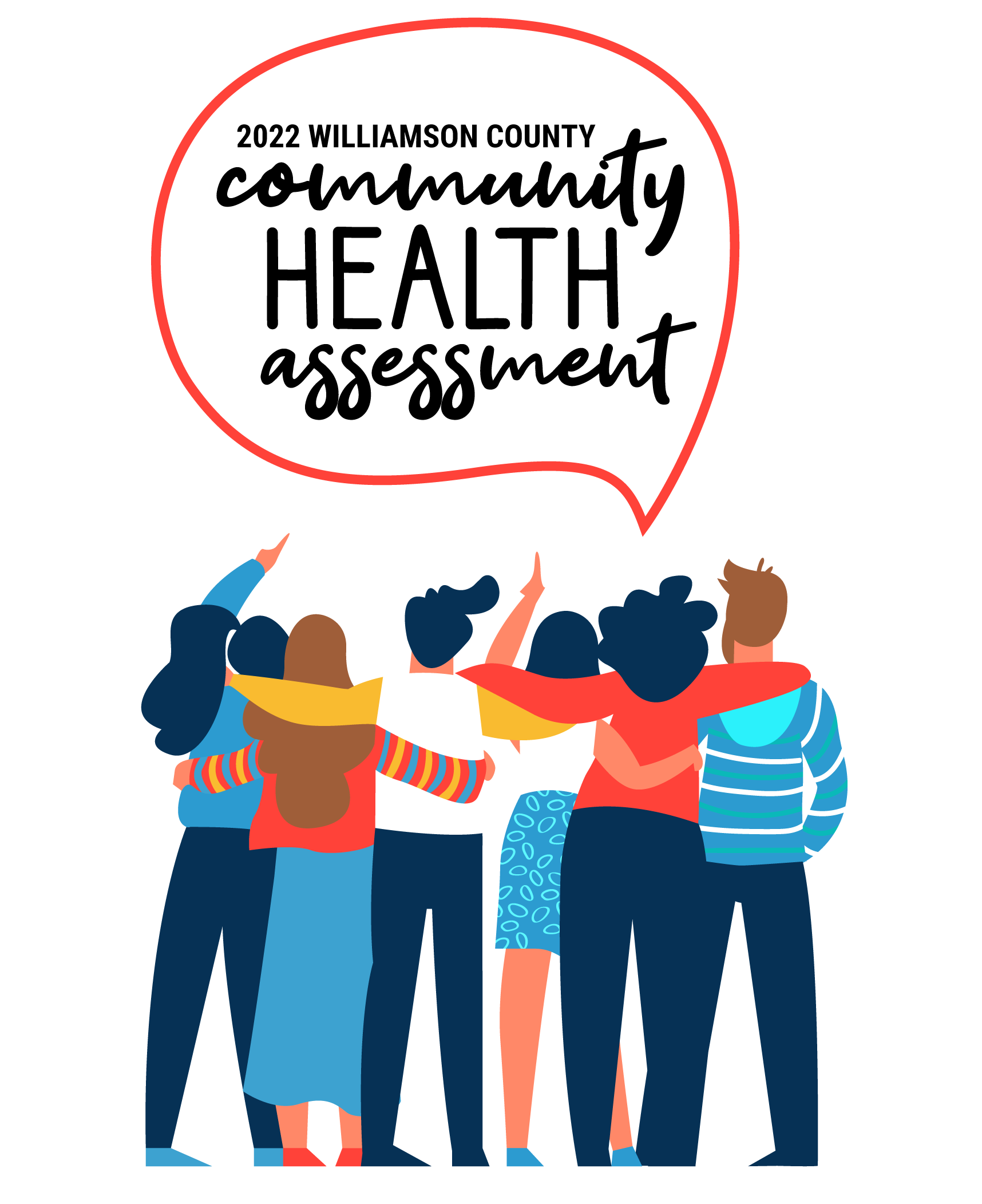2023 – 2025 Community Health Improvement Plan
|
Citation:
Williamson County and Cities Health District (2020). 2020-2022 Williamson County Community Health Improvement Plan. Accessed at www.healthywilliamsoncounty.org/chip
|
|
Access to Healthcare
|
Chronic Disease and Contributing Risk Factors
|
Mental Health and Well-being
|
Social and Structural Determinants of Health
|
Access to Healthcare Action Plan
OBJECTIVE AH 1.1 By 2025, providers in Williamson County will explore equity-based models of healthcare services with a primary focus on health equity zones.
2025
STRATEGY AH 1.1.1 improve care coordination to individuals at highest risk for poor health outcomes.
STRATEGY AH 1.1.2 increase awareness of family, infant health, and early childhood health services with a primary focus on residents in Health Equity Zones in Williamson County.
STRATEGY AH 1.1.3 provide technical assistance to partners to support the implementation of policies and programs that support needs for vulnerable populations (African Americans, Asian Americans, pregnant and breastfeeding mother with children under six years of age, people with disabilities and low-income aging people).
STRATEGY AH 1.1.4 explore academic partnerships to connect residents to scholarships, apprenticeships, incentives, and paid internships for healthcare professions.
STRATEGY AH 1.1.5 increase exposure to health careers to high school students through schools and other programs such as HOSA-Future Health Professionals.
STRATEGY AH 1.1.5 increase training and technical assistance opportunities for the National Standards for Culturally and Linguistically Appropriate Services (CLAS) in Health and Healthcare and Culturally Humility for partners in Williamson County.
STRATEGY AH 1.1.7 research and share information on non-traditional methods of care delivery focusing on access, equity, quality, and costs of care in Health Equity Zones.
OBJECTIVE AH 2.1 By 2025, increase the proportion of adults whose health care providers ask them to describe how they will follow health instructions by 5%. Baseline 25.6% to 30.5%. Source Healthy People 2030/Health Literacy.
2025
STRATEGY AH 2.1.1 explore health education opportunities tailored to the needs of Health Equity Zones.
OBJECTIVE AH 3.1 By 2025, increase the rate of adults that report having visited a doctor for a routine checkup within the past year by 5%. Baseline is 70.5% to 75.5%. Source: CDC Places.
2025
STRAT#EGY AH 3.1.1 increase health promotion to community members on the importance of routine screenings.
STRATEGY 3.1.2 explore creating partnerships with local universities to collect, analyze, and share local data.
Chronic Disease and Chronic Disease Risk Factors Action Plan
OBJECTIVE CD 1.1 BY 2025, increase the Food Environment Index, which measures food insecurity, from 7.8 to 8.
2025
STRATEGY 1.1.1 encourage collaboration among existing food system organizations in Williamson County.
OBJECTIVE CD 2.1 BY 2025, decrease the percentage of adults who do not participate in any leisure-time activities (physical activities other than their regular job) during the past month from 16.9% to 16%. Source: Centers for Disease Control and Prevention.
2025
STRATEGY 2.1.1. explore collaboration with cities, schools, faith-based organizations, local transportation providers, and other partners to create free or low-cost opportunities for access to health and wellness resources and programming.
OBJECTIVE CD 3.1 BY 2025, increase designated Texas Mother-Friendly Worksites by 5% in Williamson County. Baseline is 50 sites. Source: Texas Mother-Friendly Worksite Directory.
2025
STRATEGY 3.1.1 promote worksite wellness policies and practices.
Mental Health and Well-being Action Plan
OBJECTIVE MHWB 1.1 BY 2025, increase enrollment and usage of Texas Child Health Access Through Telemedicine (TCHATT) in all 13 Williamson County School Districts. Baseline is 7 of 13 districts not fully onboard. Source: TCHATT District and Campuses-Smartsheet.com.
2025
STRATEGY MHWB 1.1.1 integrate behavioral health into primary healthcare systems and schools for individuals and families.
OBJECTIVE MHWB 2.1 reduce the Substantiated Child Abuse Rate in Williamson County from 4.7 cases/1,000 children to 2 cases/1,000 children. Source: TX Department of Family Services.
2025
STRATEGY 2.1.1 increase safeguards and education to empower families and communities to prevent and respond to neglect, abuse, and violence while supporting those that have experienced trauma or violence.
Mental Health and Well-Being Action Plan
Behavioral Health Task Force

Child and Youth Behavioral Health Task Force

About
- promote behavioral health and well-being.
- enable the early identification of concerns, and
- ensure the use of the least intervention needed when concerns arise.
CHILD AND YOUTH BEHAVIORAL HEALTH TASK FORCE ACTION PLAN
OBJECTIVE BHTF 1.1 By 2025, Williamson County will work with the Texas legislature to increase and sustain local funding opportunities available through public/private partnerships.
2025
STRATEGY BHTF 1.1.1 BHTF's subcommittee will commit to continue to work with the Conference of Urban Counties, Texas Council of Community Centers, Texas Sheriff's Association and Bluebonnet Trails Community Services to discuss identified gaps and develop an action plan.
STRATEGY BHTF 1.1.2 BHTF's subcommittee will provide legislative recommendations through developing talking points and preparing standardized materials and will present to BHTF during quarterly meetings.
STRATEGY BHTF 1.1.3 BHTF's subcommittee will organize for BHTF to host legislators to discuss the future of behavioral healthcare in Williamson County with possibility of discussion about local match to address identified gaps. Invite individuals with lived experience to share stories with legislature.
OBJECTIVE BHTF 2.1 By 2025, Williamson County through collaboration and partnership will begin a pilot project of a jail-based competency restoration program reducing the number of days from arrest to disposition of court case.
2025
STRATEGY BHTF 1.1.1 A jail-based competency restoration committee will be formed to monitor success, identify any issues that may arise, and ensure communication among involved agencies and departments.
STRATEGY BHTF 2.1.2 A baseline of average number of days of incarceration for individuals eligible for the Jail-based Competency Restoration program will be identified.
STRATEGY BHTF 2.1.3 Bluebonnet Trails Community Services and the Williamson County Sheriff's Department (Correction Division) will expand the Jail-Based Competency Restoration program.
OBJECTIVE BHTF 3.1 By 2025, Williamson County will create a data-informed suicide fatality review committee to gather appropriate data to identify community needs.
2025
STRATEGY BHTF 3.1.1 improve suicide-related data collection by receiving all reported cases from all four precincts.
STRATEGY BHTF 3.1.2 suicide fatality review committee will define mission and scope of work, within legally authorized ability to pursue Objective BHTF 4.1.
STRATEGY BHTF 3.1.3 BHTF will host first suicide fatality committee review meeting after reviewing ethical and legal concerns and receiving approval form leadership.
OBJECTIVE BHTF 4.1 By 2025, Williamson Couty will work with mental health providers, non-profits, churches, schools, first responders, and the justice system to increase knowledge of risk factors of suicide and lifesaving resources available.
2025
STRATEGY BHTF 4.1.1 establish subcommittee to increase knowledge of risk factors of suicide and lifesaving resources available by forming a partnership with The American Foundation for Suicide Prevention (AFSP).
STRATEGY BHTF 4.2.1 increase efforts to train Williamson County residents on Mental Health First Aid/Suicide Prevention Training, including local businesses, schools, churches, and parents.
STRATEGY BHTF 4.3.1 explore creating an annual BHTF mental health conference.
Social and Structural Determinants of Health Action Plan
OBJECTIVE CYBHTF 1.1 By 2025, Williamson County will reduce school-based expulsions/removals and referrals/arrests, especially related to zero tolerance policies. Baseline for Juvenile Justice Alternative Educational Programs (JJAEP) 2023-23 school year is a total of 104 expulsions and 169 total school related referrals/arrests. Source: Williamson County JJAEP.
2025
STRATEGY CYBHTF 1.1.1 Create a decision-making tree between police departments and school districts that allows for situational response.
STRATEGY CYBHTF 1.1.2 Educate students regarding consequences (legal and life choices).
STRATEGY CYBHTF 1.1.3 Reform disciplinary alternate education programming by using and aligning trauma informed, relational and restorative practices in Williamson County.
OBJECTIVE CYBHTF 2.1 By 2025, reduce school vaping in Williamson County schools. Baseline total 104 expulsions, 70% Felony Drug (THC vape pens). Source Williamson County JJAEP.
2025
STRATEGY CYBHTF 2.1.1 Form education and prevention subcommittee.
STRATEGY CYBHTF 2.1.2 Form intervention and postvention subcommittee.
STRATEGY CYBHTF 2.1.3 Form enforcement subcommittee.
OBJECTIVE CYBHTF 3.1 By 2025, form a committee representing student and family voices from each city in Williamson County.
2025
STRATEGY CYBHTF 3.1.1 Increase community trust by holding listening sessions, conducting surveys and involving them in leadership and decision-making process.
OBJECTIVE CYBHTF 4.1 By 2025, Williamson County will decrease the number of referrals to JJAEP that could be handled by prevention programing. Baseline for the 2023-23 school year is a total of 104 expulsions and 169 total school related referrals/arrests. Source: Williamson County JJAEP.
2025
STRATEGY CYBHTF 4.1.1 Expand focus of identifying and addressing root causes related to behavior linked to school discipline.
STRATEGY CYBHTF 4.1.2 Connect students with multi-tiered systems of support through a blend of school and community resources.
OBJECTIVE CYBHTF 5.1 By 2025, increase residential placement options in Williamson County for youth and families.
2025
STRATEGY CYBHTF 5.1.1 Use subcommittee to explore options for increasing, expanding, and creating hybrid funding stream options for more residential facilities and beds.
STRATEGY CYBHTF 5.1.2 continue advocating for increased options with expanded accessibility and work downstream to identify need for behavioral health intervention sooner, especially options for those vulnerable populations that are typically excluded from placements (i.e., aggressive, intellectual difficulties).
STRATEGY CYBHTF 5.1.3 increase and improve training for assessment and placement staff.
Social and Structural Determinants of Health Action Plan
OBJECTIVE SDOH 1.1 By 2025, reduce incidence of the 65+ population with an independent living difficulty by 5% from 12.1% to 7.1%. Source: American Community Survey.
2025
STRATEGY SDOH 1.1.1 encourage collaboration with partners providing services for aging adults, people with disabilities, and their caregivers.
OBJECTIVE SDOH 2.1 By 2025, reduce the number of "No Services Exists" response by 5% for Williamson County United Way 2-1-1 callers. Source: United Way 2-1-1 2022 Annual Calls for Service-Reason-No Services Exist, Baseline is 471 calls.
2025
STRATEGY SDOH 2.1.1 collaborate with potential partners (Community First, Mobile Loaves and Fishes, Family Eldercare, Dell Section 3, Hope Alliance, Housing Foundation, Wilco Homeless Coalition and other non-profits) to provide resources for the unsheltered population.
STRATEGY SDOH 2.1.2 explore collaboration with cities, elected officials, transportation providers (e.g., CARTS, CapMetro, Drive a Senior, Faith-In-Action) and healthcare and insurance providers.
OBJECTIVE SDOH 3.1 By 2025, decrease ratio of certified Community Health Workers in Williamson County from 15,765 to 1, to 10,000 to 1. Source: Texas Health Data-Health Profession Fact Sheets.
2025
STRATEGY SDOH 3.1.1 promote concept of local community members to be trained as community health workers.



